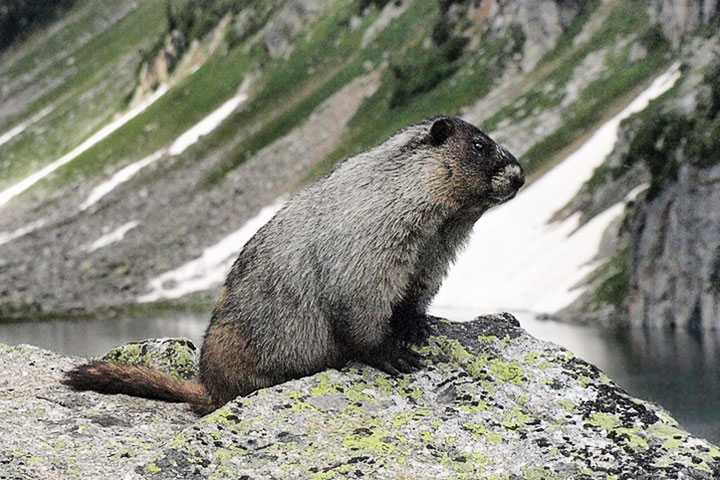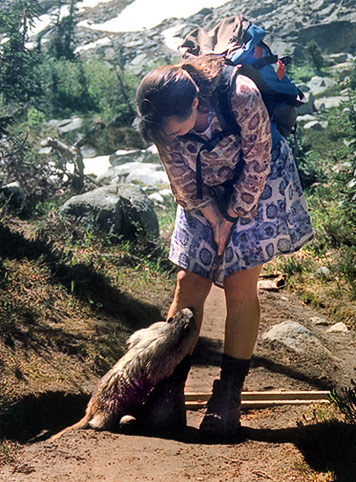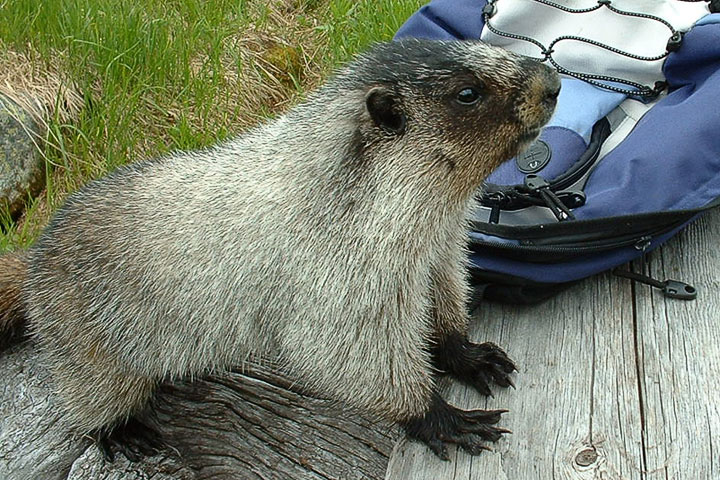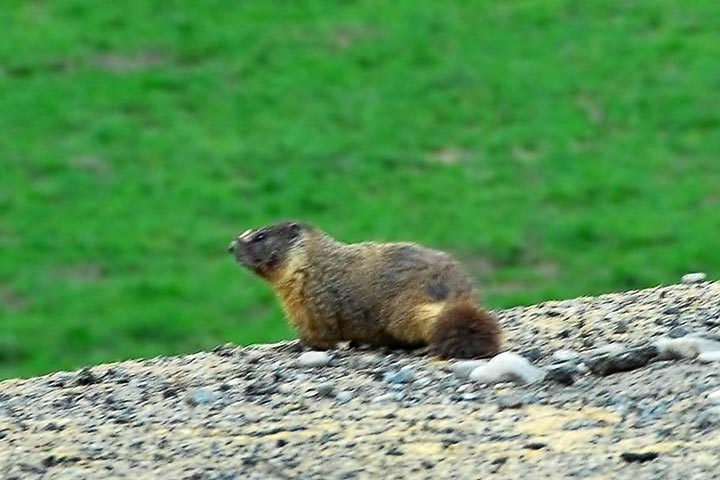Marmots
Marmots are members of the same family, Sciuridae, as are squirrels; indeed, they can be thought of as a large ground squirrels, although the etymological of the name is Latin, mures montani: mountain mouse.
There are two species of marmot in the vicinity of the Lake although they occupy different ranges based upon altitude: the Hoary Marmot is found around alpine and subalpine meadows and scree ; the Yellow-bellied Marmot is found in the valleys and lower mountain slopes. (Don’t count on spotting a woodchuck around here; the last isolated observation was nearly a century ago).
The Hoary Marmot is a favourite of hikers. It is often seen lounging on the rocks staring around at its beautiful surroundings—although, it is probably watching for predators such as the Grizzly or Golden Eagle. When danger is sensed, others are warned with a shrill whistle (which has also earned it the nickname of whistler). It consumes large quantities of vegetation in the summer, laying on layers of fat to enable it to hibernate for eight to nine months under the alpine snows of winter.
 High above Kootenay Lake, a Hoary Marmot rests by the edge of Kokanee Lake.
High above Kootenay Lake, a Hoary Marmot rests by the edge of Kokanee Lake. Doug Thorburn
Doug Thorburn
 Some local marmots have discovered that the legs of hikers serve as a source of salt.
Some local marmots have discovered that the legs of hikers serve as a source of salt.  Doug Thorburn
Doug Thorburn
 A Hoary Marmot at home in its favourite haunt, an alpine scree slope.
A Hoary Marmot at home in its favourite haunt, an alpine scree slope.  Ken Anderson
Ken Anderson
 A Hoary Marmot isn’t above scarfing a few morsels from hikers.
A Hoary Marmot isn’t above scarfing a few morsels from hikers.  Doug Thorburn
Doug Thorburn
 The Yellow–bellied Marmot is a marmot of the valleys and lower mountain slopes of the Selkirks.
The Yellow–bellied Marmot is a marmot of the valleys and lower mountain slopes of the Selkirks.
![]()